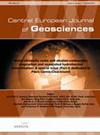Fluid-rock interaction in the Kangankunde Carbonatite Complex, Malawi: SEM based evidence for late stage pervasive hydrothermal mineralisation
引用次数: 16
Abstract
The Kangankunde Carbonatite Complex from the Cretaceous Chilwa Alkaline Province in southern Malawi contains ankeritic and siderite carbonatite that are affected by late stage remobilisation by a carbothermal or hydrothermal fluid. The coarse pegmatitic siderite carbonatite that hosts exotic minerals like monazite, synchysite, bastnasite, strontianite and apatite in vugs and cavities constitutes some of the richest rare earth deposits in the world. Besides these minerals, our studies reveal the presence of collinsite and aragonite from the siderite carbonatite. Fine drusy monazites are seen as overgrowths on thin veinlets of siderite within the rare earth mineralised zones. We present unambiguous SEM-based surface textural evidence such as presence of dissolution-corrosion features like etching along cleavage, solution channels, solution pits, sinstered scaly surface, etc. along with rare earth mineralisation that suggests the exotic minerals in the siderite carbonatite did not crystallise from carbonate magma and are a result of sub-solidus processes involving carbonatite-derived fluids. We believe that the monazite-synchysitebastnasite-strontianite-collinsite assemblages were formed by juvenile post magmatic hydrothermal alteration of pre-existing carbonatite by a complex CO2-rich and alkali chloride-carbonate-bearing fluid at ∼250 to 400°C in an open system. This late ‘magmatic’ to ‘hydrothermal’ activity was responsible for considerable changes in rock texture and mineralogy leading to mobility of rare earth elements during fluid-rock interaction. These aspects need to be properly understood and addressed before using trace and rare earth element (REE) geochemistry in interpreting carbonatite genesis.马拉维Kangankunde碳酸盐岩杂岩的流体-岩石相互作用:基于SEM的晚期普遍热液矿化证据
来自马拉维南部Chilwa碱性省白垩纪的Kangankunde碳酸岩杂岩含有受晚期碳热液或热液再活化影响的铁榴石和菱铁矿碳酸岩。粗大的伟晶质菱铁矿碳酸盐中含有奇异的矿物,如独居石、合晶石、氟碳铈矿、锶矿和磷灰石等,这些矿物在洞穴和洞穴中构成了世界上最丰富的稀土矿床。除了这些矿物外,我们的研究还揭示了菱铁矿碳酸盐中存在colinite和文石。在稀土矿化带内,细粒粗粒独居石被视为生长在菱铁矿细脉上的过度生长物。我们提出了明确的基于sem的表面结构证据,如溶解-腐蚀特征的存在,如沿解理蚀刻,溶液通道,溶液坑,烧结片状表面等,以及稀土矿化,表明菱铁矿碳酸盐岩中的外来矿物不是由碳酸盐岩浆结晶的,而是涉及碳酸盐衍生流体的亚固体过程的结果。我们认为,单氮石-合辉石-氟碳石-强钙石-collinsite组合是在一个开放体系中,在250 ~ 400℃的温度下,由一个复杂的富含二氧化碳和含碱氯化物-碳酸盐岩流体对原有的碳酸岩进行岩浆后热液蚀变而形成的。这种晚期的“岩浆”到“热液”活动导致了岩石结构和矿物学的巨大变化,导致了稀土元素在流体-岩石相互作用期间的流动性。在利用微量元素和稀土元素地球化学解释碳酸盐岩成因之前,需要正确理解和解决这些问题。
本文章由计算机程序翻译,如有差异,请以英文原文为准。
求助全文
约1分钟内获得全文
求助全文
来源期刊

Central European Journal of Geosciences
GEOSCIENCES, MULTIDISCIPLINARY-
自引率
0.00%
发文量
0
审稿时长
>12 weeks
 求助内容:
求助内容: 应助结果提醒方式:
应助结果提醒方式:


